PROTECT YOUR DNA WITH QUANTUM TECHNOLOGY
Orgo-Life the new way to the future Advertising by AdpathwayWe are all familiar with the standard fruits and vegetables that sell at farmers’ markets and grocery stores. As a result of growing up eating these plants, they tend to be what most gardeners focus on. However, there are many surprisingly underappreciated and underrated edible plants that are easy to grow. Many of them are beautiful and nutritious in addition to being delicious.
What makes these plants special varies. Some are easygoing perennials, while others are able to grow in the shade. Some are ornamentals that simply don’t get enough recognition in the kitchen. Many thrive in a wide variety of climates, and some self-seed or regrow repeatedly from roots.
The unusual qualities that we find in some of these plants make them hidden gems for adventurous palates. If you love to experiment with new flavors in the kitchen or plants in the garden, there are many to try. Here are a few of our favorite underrated edible plants that you should definitely try out in your own garden.
Common Sorrel
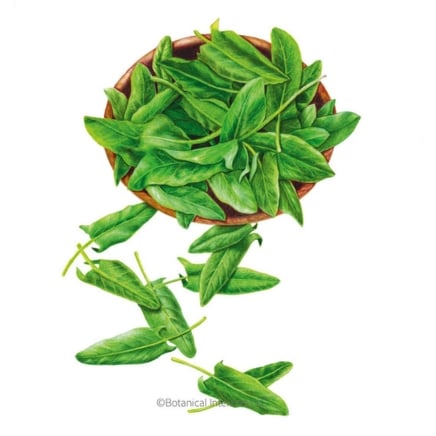


Black Velvet Nasturtium Seeds
Sorrel
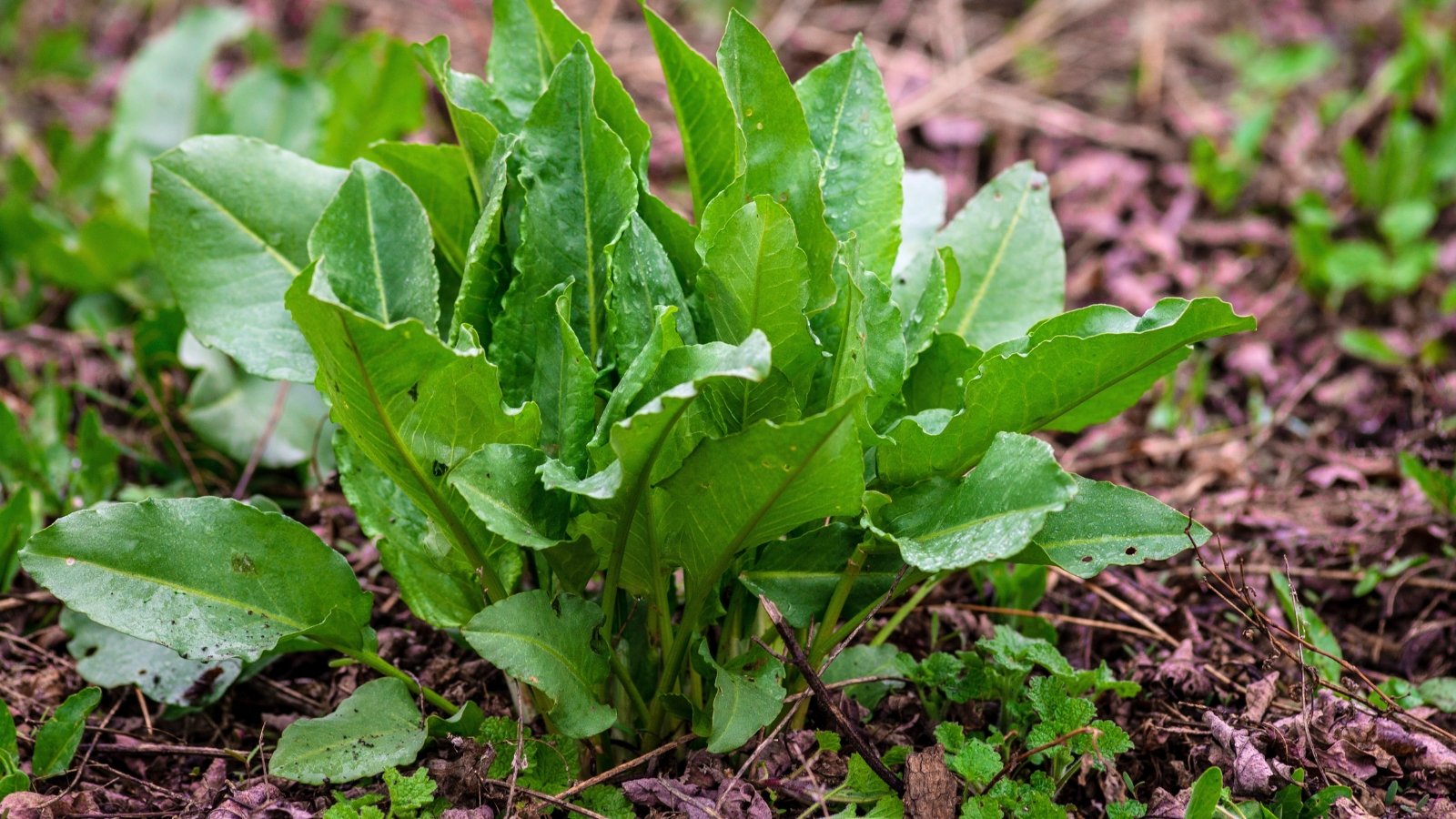 Bright young leaves add a lively tang to dishes.
Bright young leaves add a lively tang to dishes.Sorrel is a cold-hardy perennial with a tart, lemony flavor. That flavor comes from its high oxalic acid content. Because of the oxalic acid content, those with kidney diseases should consume this leafy green in moderation.
Sorrel is an attractive, underrated edible plant that grows in clumps of arrow-shaped leaves. In late spring, it also produces tall flower stalks.
Sorrel leaves are best harvested young. This is when their flavor is brightest, adding a dynamic tang to salads, soups, and other dishes. It’s often paired with cream to temper its sharpness. Once established, this is an easy plant to care for. It’s frost-tolerant, and you can cut it back after flowering for fresh leaf growth.

Sunchoke
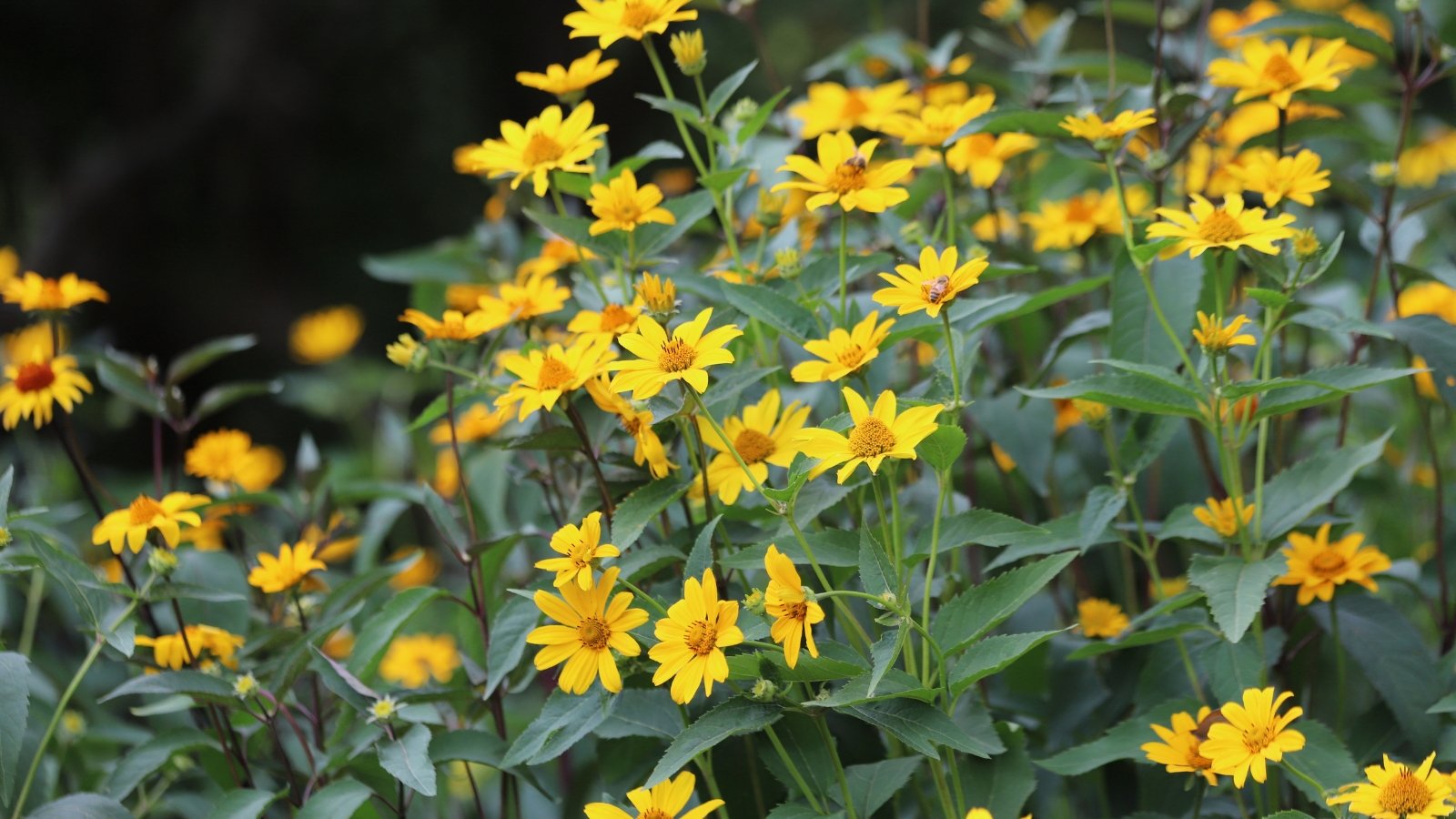 Summer flowers brighten borders while roots wait patiently.
Summer flowers brighten borders while roots wait patiently.Sunchoke, also Jerusalem artichoke, is an underrated edible plant that is not an artichoke at all. It’s actually a member of the sunflower family. Rather than consuming the flowers, as you would with an artichoke, it’s the tuberous roots that are good for eating. They do have a mild artichoke-like flavor, though.
In addition to their edible roots, they are tall, beautiful perennials that produce bright, sunny flowers in summer. They grow up to 12 feet tall and make a stunning and practical choice for the back of the border. The tubers are tan, and you can eat them raw or cooked. Raw, they have a similar taste and texture to a water chestnut, while cooked, they are similar to a potato.
Serviceberry
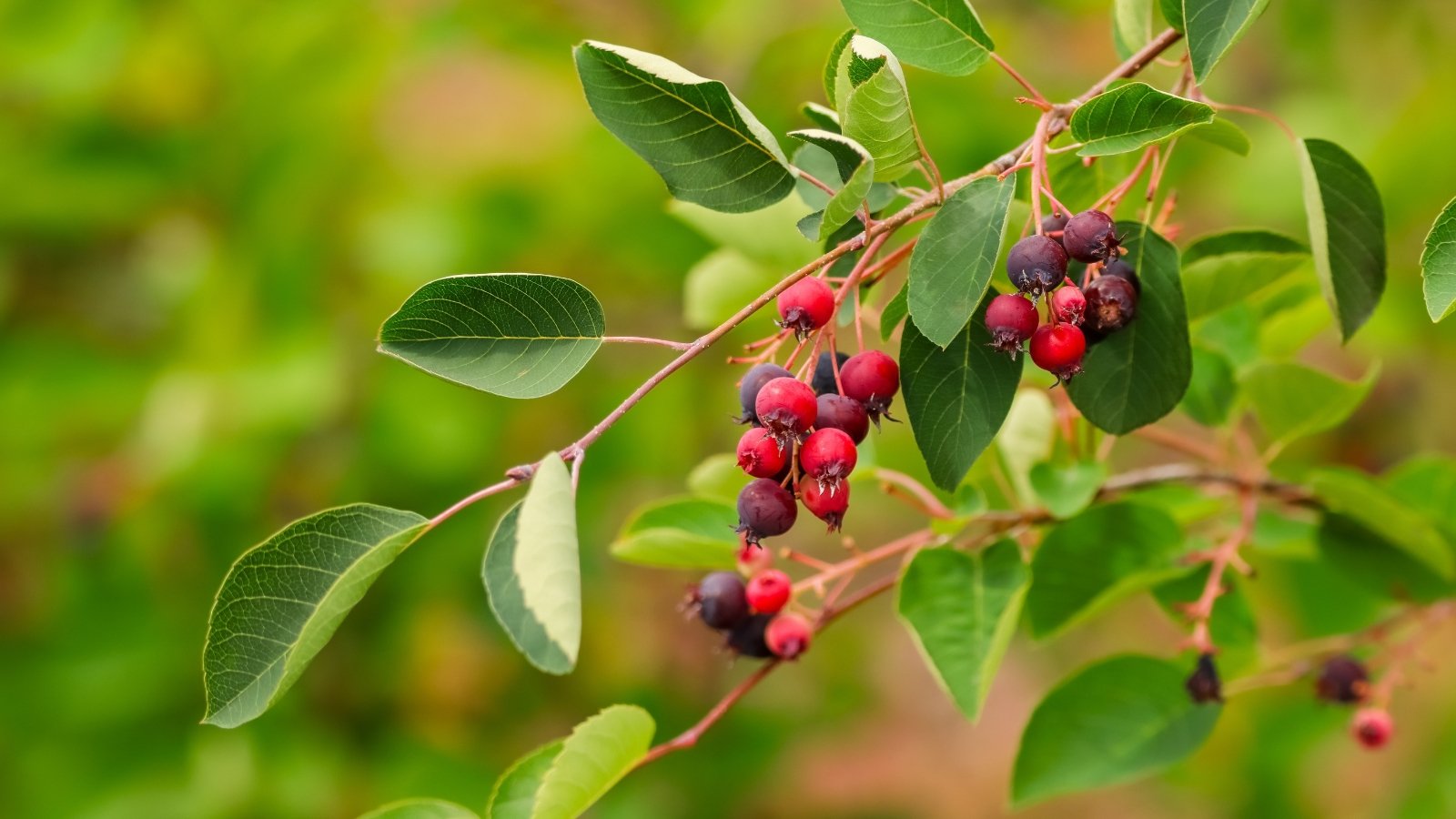 Summer branches bend low under purple little fruits.
Summer branches bend low under purple little fruits.Serviceberry is a group of trees and large shrubs that have seasonal appeal and edible fruits. The reason they’re underrated edible plants is their incredible seasonal transitions and how much they add to the garden.
They produce beautiful white blossoms in the spring, followed by attractive green foliage. Those leaves turn vivid and brilliant shades of orange and red in the fall. The smooth, gray bark is visible in winter along with its nicely balanced branches.
The berries ripen to shades of red or purple, depending on the cultivar. They are sweet, with a hint of almond flavor which comes from their small, edible seeds. You can eat them fresh from the tree or prepare them as you would blueberries. They are wonderful for making pies, jams, and muffins! The plants are low-maintenance and adaptable to a variety of conditions.
Miner’s Lettuce
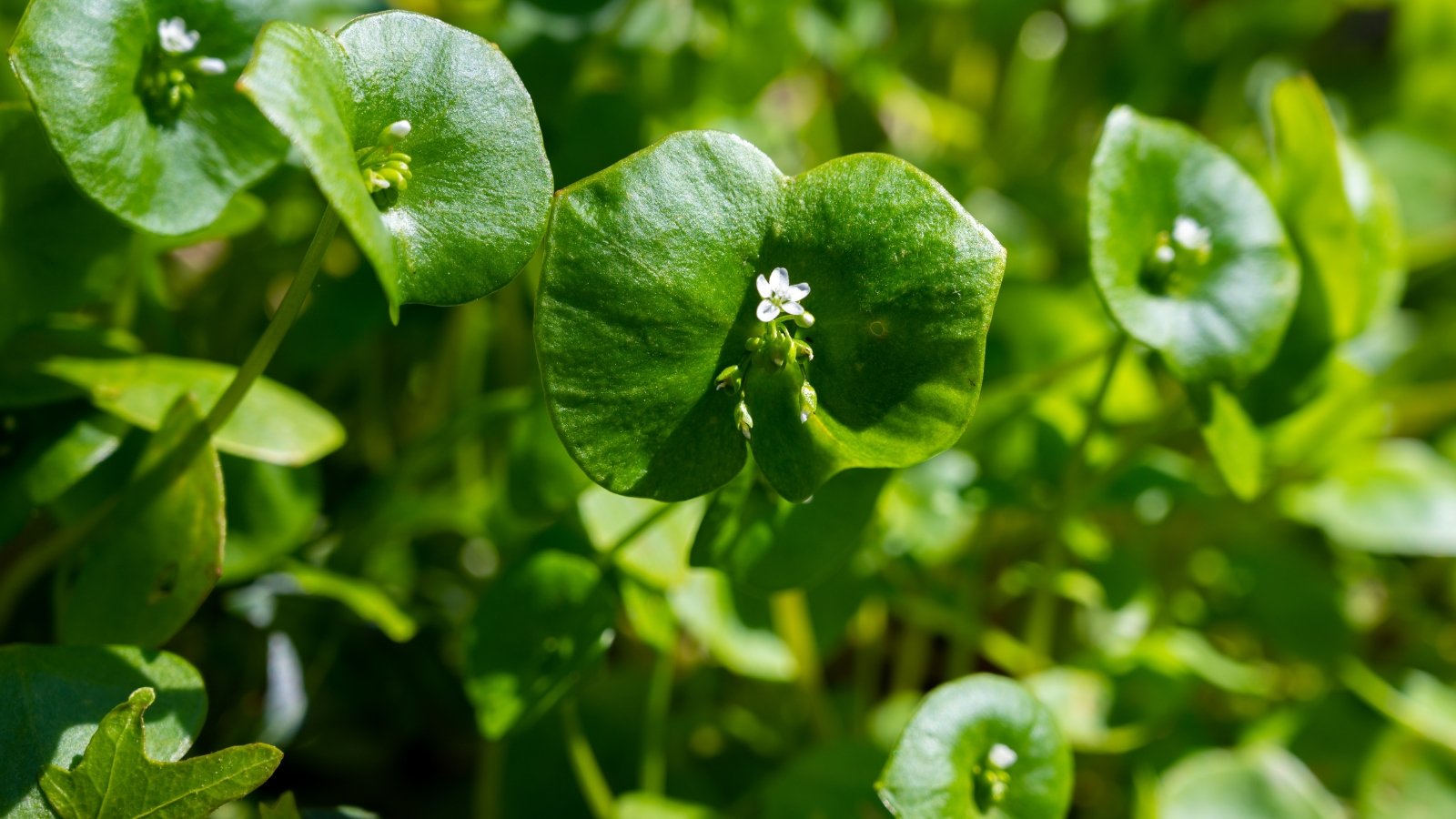 Soft leaves grow low, hiding in shaded corners.
Soft leaves grow low, hiding in shaded corners.Miner’s lettuce is a mild, tender, leafy green that is native to North America. Named after California Gold Rush miners, they ate this plant to prevent scurvy. It’s rich in vitamin C and has a slightly sweet flavor. In zones 6-10, it’s a short-lived perennial, and grows as an annual elsewhere.
This underrated edible plant is tolerant of poor soil types and germinates easily. It prefers some shade and well-drained soil. Because it’s low-growing, it’s great for underplanting in the vegetable garden. It’s best in the spring, and as temperatures warm, it bolts and goes to seed. As it germinates easily, it typically multiplies in the following year.
Good King Henry
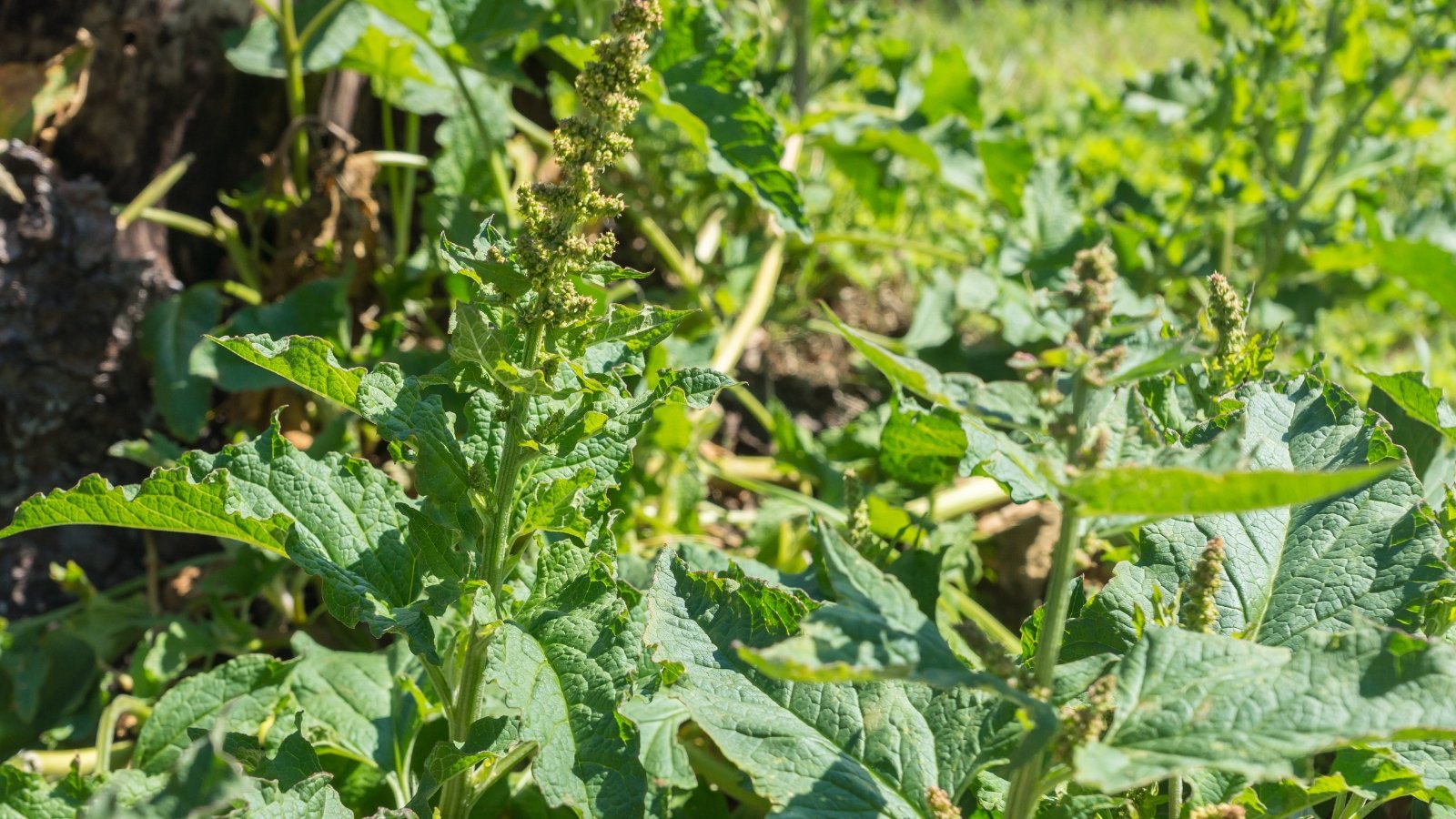 Summer flowers rise tall above the leafy patch.
Summer flowers rise tall above the leafy patch.This underrated edible plant is native to Europe and also goes by the name perennial spinach. It was once common in cottage gardens, and can live for decades in the same spot if you give it the right care. The triangular leaves are edible and taste similar to spinach. They do contain saponins and oxalates, so it’s better to cook them than eat them raw.
Good King Henry also flowers in summer, sending up tall shoots. You can also prepare and eat them like asparagus. Cooking all parts of this plant mellows the flavor, which can be a little bitter when raw.
It’s a low-maintenance plant that is resistant to most pests. It also self-seeds if you allow it to.
Oca
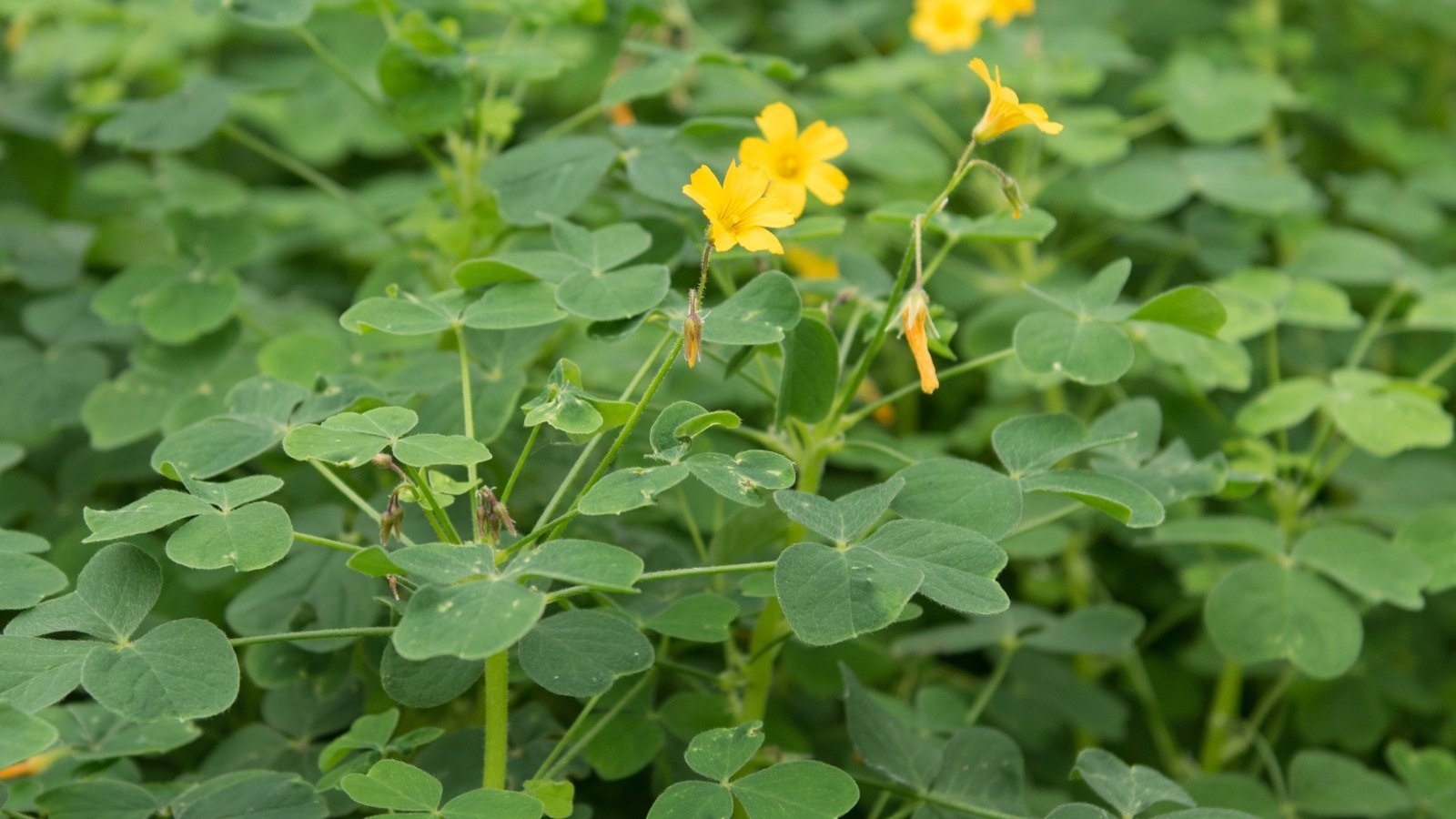 Tubers store beautifully for weeks after foliage fades.
Tubers store beautifully for weeks after foliage fades.Oca is a tangy, colorful root vegetable that has been cultivated for centuries in its native Andean region. It’s perennial, but typically grown as an annual. It has value as an ornamental, but it’s an underrated edible plant.
It has small, clover-shaped leaves that grow on long, trailing stems up to three feet. The tubers are the edible portion and come in shades of yellow, purple, red, orange, and pink.
Oca isn’t frost-tolerant, so a freeze will kill back the foliage. Leave the tubers for two to three weeks after the tops die off before you harvest them. You can prepare this pest and disease-resistant plant like a potato. The leaves and shoots are also edible, but contain oxalic acid, so consume these in moderation.
Mulberry
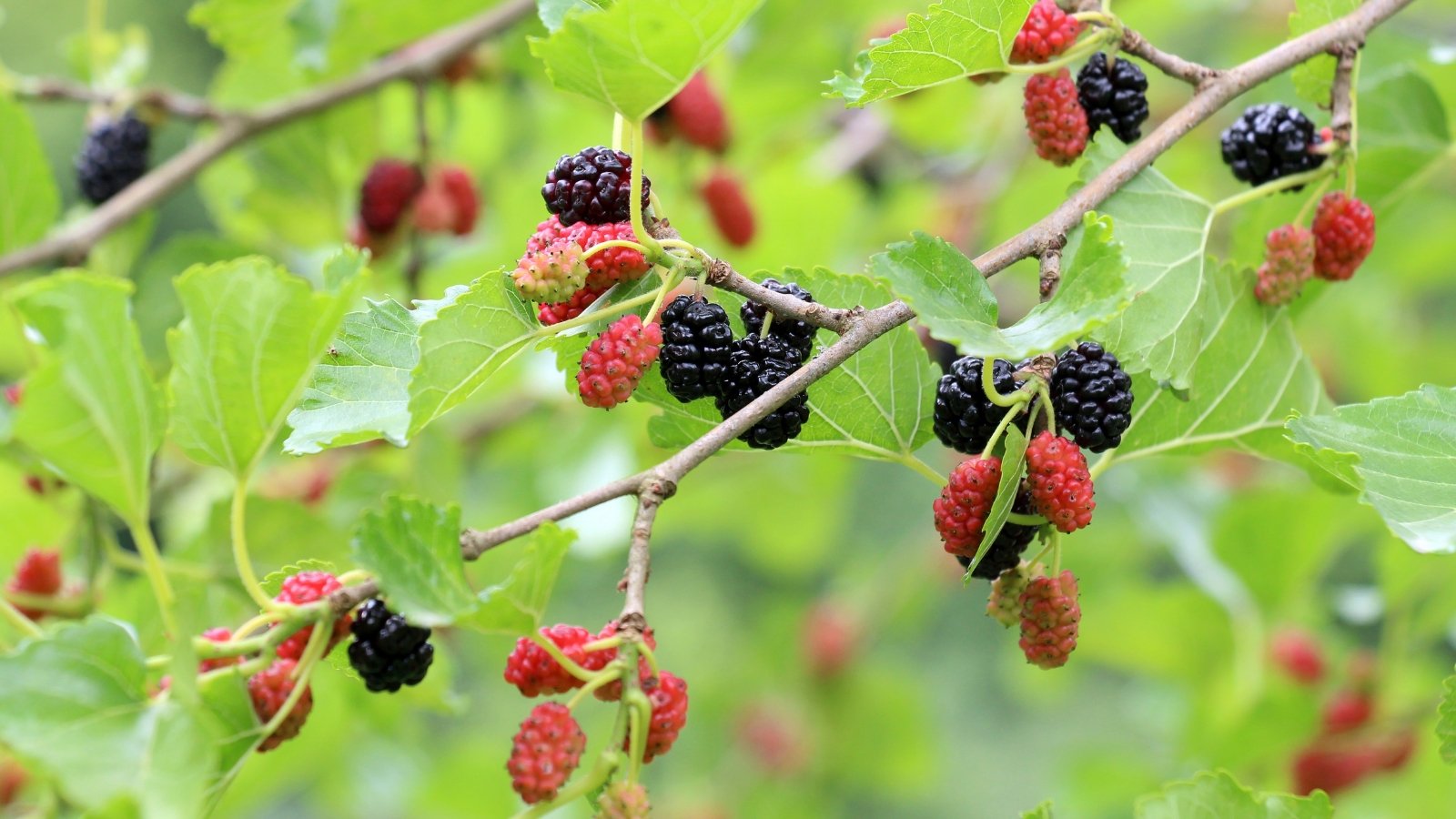 Pink to deep purple fruits delight the senses.
Pink to deep purple fruits delight the senses.Mulberries are fast-growing deciduous trees known for their abundant, sweet, and nutritious berries. They’re native to various parts of Asia, Africa, and North America, depending on the species. There are species that grow well in zones 4–10. The fruit resembles elongated blackberries and ranges in color from white and pink to deep purple-black, depending on the variety.
Mulberries are rich in vitamin C, iron, and antioxidants. You can eat them fresh off the tree or use them to make jams, desserts, pies, and syrups. One of the nicest qualities of a mulberry tree is its adaptability and tolerance. These underrated edible plants are attractive and make excellent shade trees, in addition to producing delicious berries. Be careful when you harvest—the juice stains!
Before you plant a mulberry tree, ensure you’re planting one that isn’t invasive to your region. Certain species colonize spaces quickly and push out native plants. These will certainly colonize your garden too.
Canna Lily
 Sturdy stalks shoot up, adding drama everywhere they are planted.
Sturdy stalks shoot up, adding drama everywhere they are planted.Canna lilies are famous as dramatic and colorful ornamentals, but they’re underrated as edible plants. They’re remarkably adaptable, tolerating high humidity and wet soil with ease. They prefer ample water, but I completely neglect mine, and they come back every year with more flowering friends.
The starchy tubers are one edible part of the canna lily. These rhizomes are best harvested young, at about six to ten months, as the older ones can be larger and more starchy. You can also eat the young shoots as you would asparagus, and the large leaves are great for wrapping food to steam it.
Nasturtium
 Easy to grow, they cheer up the garden.
Easy to grow, they cheer up the garden.Nasturtiums are perennials in warm climates and usually grown as annuals elsewhere. They are beautiful ornamentals, but underrated as edible plants. The entire plant is edible, from the leaves to the flowers, and even the seeds. The bright green, lilypad-like leaves are wonderful for adding to salads. They offer a bright, peppery flavor.
The flowers share the same peppery flavor, and in vivid shades of yellow, orange, red, purple, pink, and cream, they make a stunning garnish. You should grow these, if only to decorate cheese boards and fancy cocktails. They’re fast-growing, beautiful, and drought-tolerant once established. They’re also good food for pollinators.

Maypop
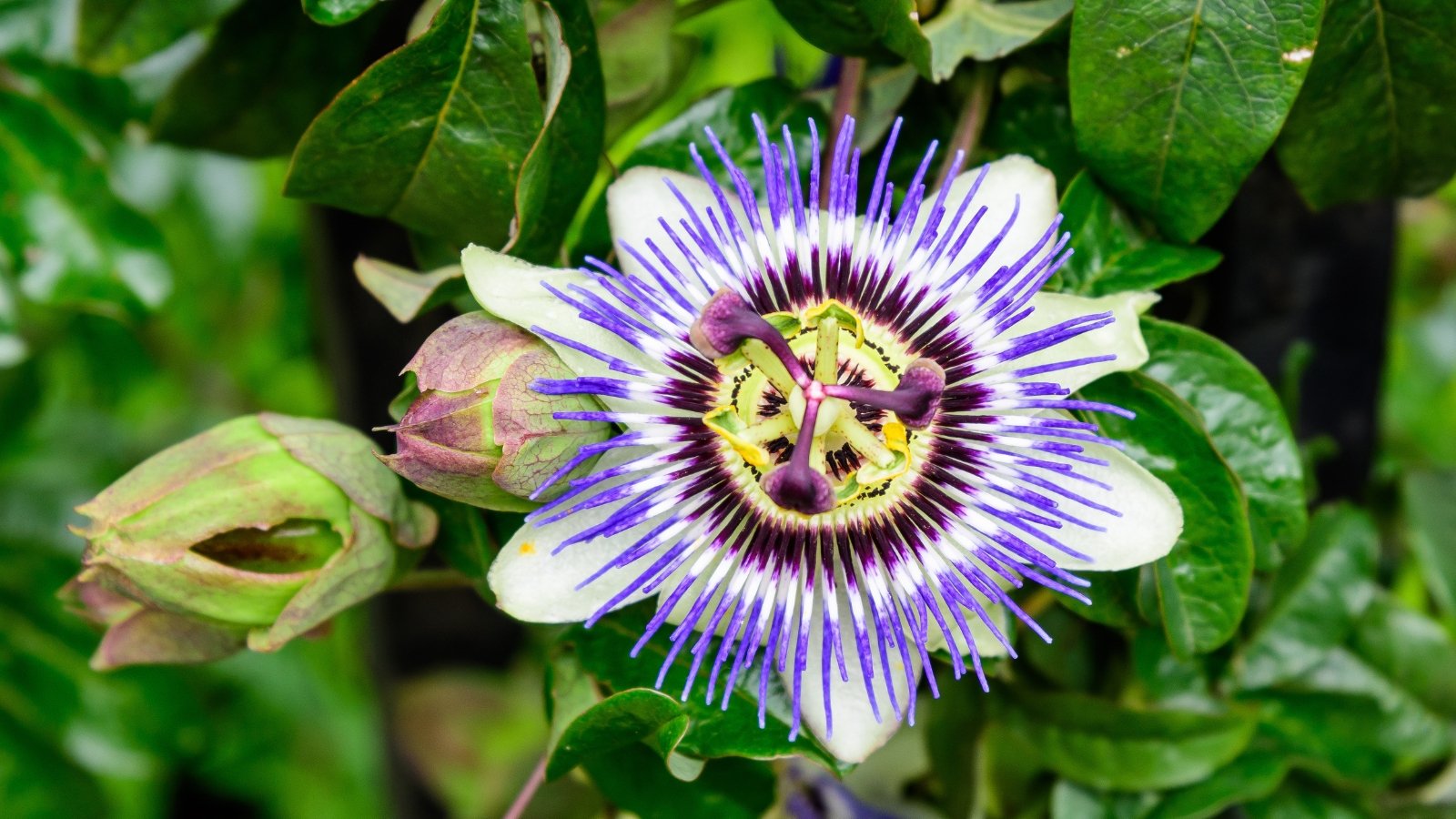 Hardy vines survive winters where few others dare.
Hardy vines survive winters where few others dare.Maypop is a hardy passionflower native to the southeastern United States. It’s usually grown for its exotic blooms, but it also produces edible fruit. Maypop thrives as a perennial in zones 5–9. This makes it one of the few passionfruit species that can tolerate cold winters.
The vigorous and underrated vine can grow 10 to 25 feet in a single season. It produces unique purple-and-white, fringed flowers from midsummer into early fall.
The flowers not only draw pollinators like bees and butterflies but are also fragrant and ornamental. The fruits are small and filled with a sweet and tart pulp. You can eat them fresh or make jams, desserts, and juice from them.
In good conditions, this plant will take over an area. Plant it somewhere it can spread out, and grow freely without obstructing other plants or structures.
Watercress
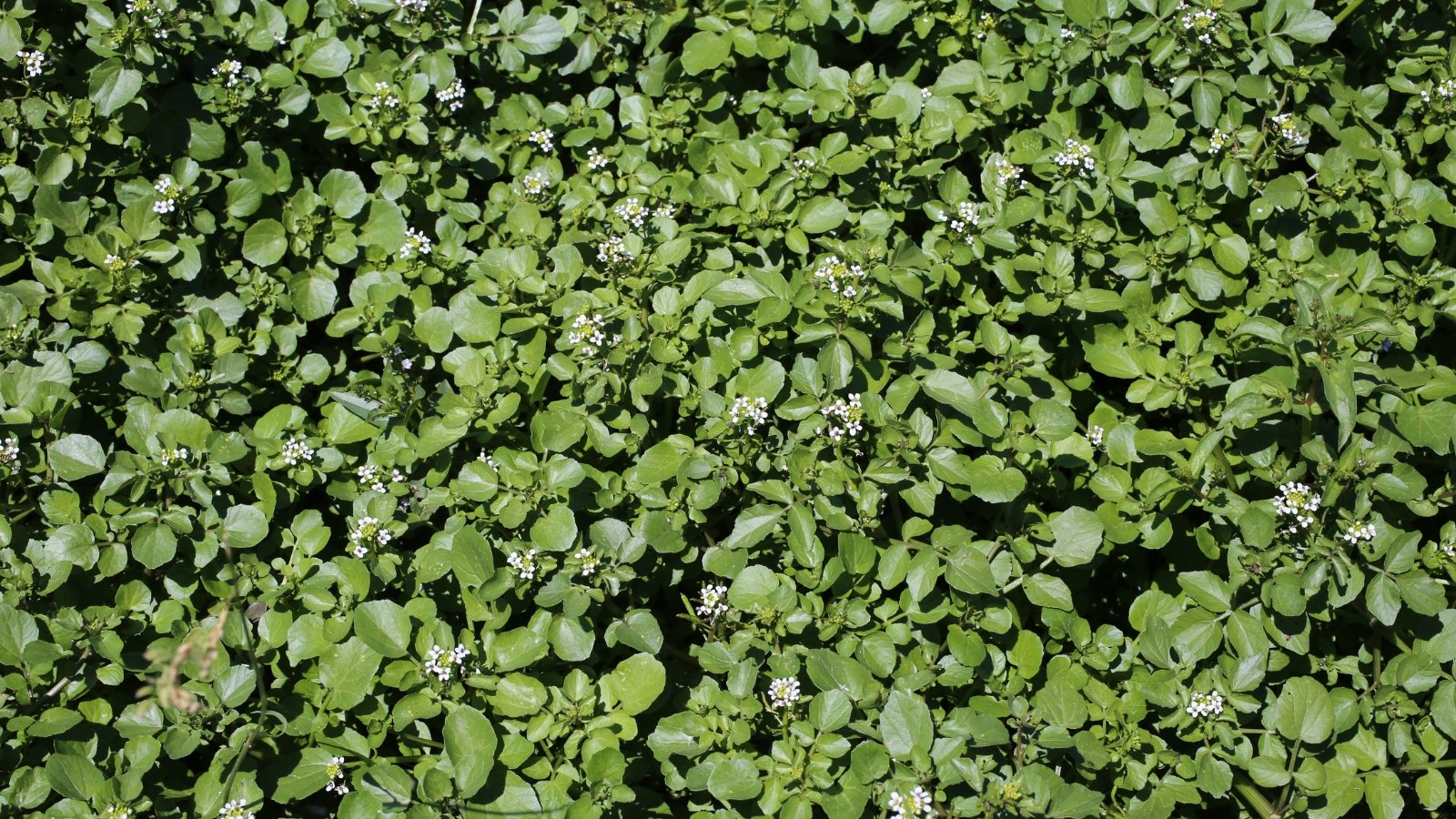 Ancient greens thrive where slow streams wander.
Ancient greens thrive where slow streams wander.Watercress is an underrated, fast-growing, perennial leafy green. It’s related to nasturtiums and shares a similar peppery, slightly bitter flavor. It’s semi-aquatic and thrives in cool, clean, slow-moving water.
This is one of the oldest known leafy vegetables consumed by humans. It’s rich in vitamins A, C, and K, as well as minerals like calcium and iron, and tons of antioxidants.
You can grow watercress year-round in many climates. In hotter regions, this plant prefers the cooler months of fall, winter, and early spring. If you don’t have a water feature like a pond or stream to grow it, you can grow watercress hydroponically. It also grows well in containers. The young stems and leaves are tender and less bitter than the mature ones.


 7 hours ago
5
7 hours ago
5




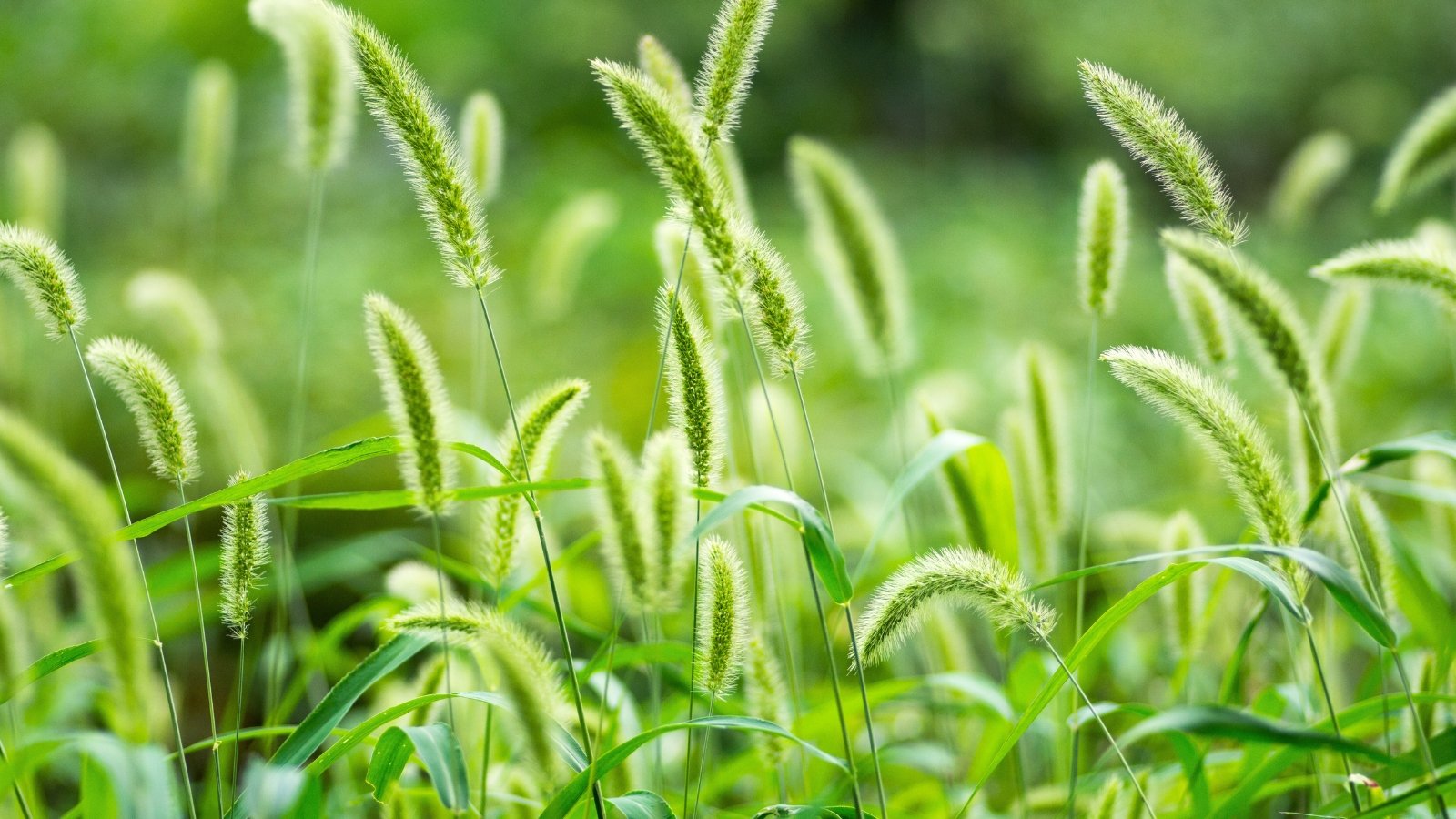
















 English (US) ·
English (US) ·  French (CA) ·
French (CA) ·